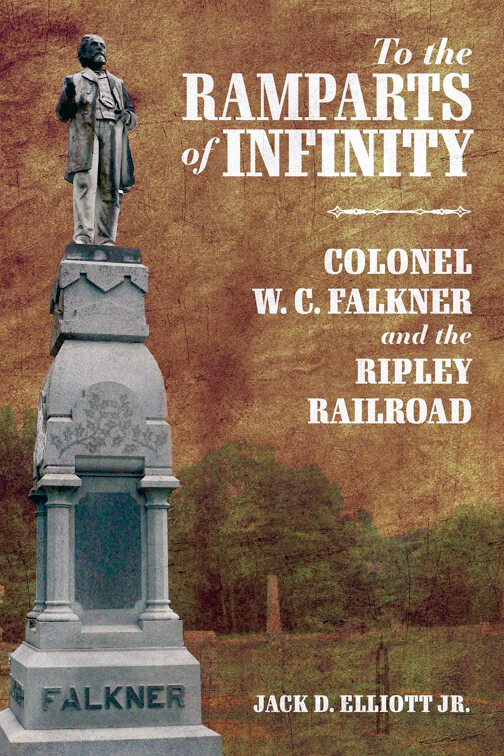The following article, written by Col. M.D.L. Stephens, appeared in Calhoun Monitor in 1900, was reprinted June 18, 1931 and on in July 6, 1972 The Monitor-Herald. It later appeared in the newsletter of the Calhoun County Historical Society MS, First Quarter, 2000. This colorful account of a traveling circus touring north central Mississippi at the turn of the last century gives you a stiff dose of Colonel Stevens’ wry humor.
In 1856, Old Dan Rice, the celebrated clown and circus showman, made a venture through Calhoun County, striking Benela first, next day at Pittsboro and thence over to Coffeeville. Being a man of extraordinary abilities and sagacious comprehension by nature as well as the experience of extensive travel, it took him no time to discover the prominent characteristics of the denizens of that inland county.
Really he did not expect to find so far out in the interior a class of people so intelligent and independent. Calhoun’s citizenship made no pretensions in those days at style rather on the grotesque order. Such a combination, Old Dan, in all of his travels, had never struck before. Evidently their mark made its impression upon his mind as the independent sovereignty he had ever come across in all of his travels, so much so that at his next performance in Coffeeville the next day, he got off some laughable jokes at their expense, which were heartily enjoyed and applauded by her sister county-men attending the circus that day.
The first one the writer remembers was by Old Dan on his little trick mule in the grand entry, which always captivates the audience into an enchanted trance. I may say as they emerge from the dressing tent, indeed there is a charm about the “Grand Entry” of a circus; irresistible, even with the most stable-minded—the beautiful horses of varied colors, the riders in their dazzling costumes, will surely product the same effect that it did upon St. Peter, when that panorama of four-footed beasts descended to earth from the heavens.
After this parade, leaving the ring-master with his whip in hand, Dan Rice and his mule made possession of the ring to round up this initial act with something ludicrous. He made many circuits around the ring, imitating each round some laughable incident real or imaginary. Finally to close the scene, he humped himself as awkwardly as he could, at the same time remarking, “This is the way the Schoonerites rode into Pittsboro yesterday, coming to see Old Dan.”
Of course this brought forth a yelling applause from the Yalobusians. About the same time, however, the little mule was nearing the exit gap in the ring, apparently tired of the game all at once as if imitating his rider, got a vigorous hump in his own back, and just at the gateway, made a sudden stop, sending the clown forward like a flying squirrel, spreading him out in good shape in the dirt, instantly darting in to the dressing tent.
After a few seconds of suspense, Dan rose, hobbling about as though he was disjointed and a fit subject for the hospital for several weeks at least. At this juncture, the ringmaster in way of reproof said, “Oh, yes, my laddie, see what you get by making invidious comparisons?” To which the clown said pathetically, “Master, do you reckon that dang little mule was taking up for them hossiers in Calhoun County?”
“Why, sir, of course he is; he knew every word you said, besides he has relatives over there, didn’t you see them?”
“Dad drat it, them was the fellows I saw riding that way?”
“Yes, sir,” said the ringmaster.
Cogitating a moment, Old Dan came back to his master, “Say, Mr. Ringmaster, if you wanted to get out of this world without dying, where would you go to?”
“That, sir, is an impossibility; no man can get out of this world unless he dies.”
“No! I know where to get out of this world without dying,” said Dan.
“And where would you go, sir?”
“Why, just over the Schooner, into the Free State of Calhoun!”
The rebel yell followed this enunciation. Many Schoonerites present and their generous natures added in the eclat of that day. In this tour of Dan Rice of Mississippi, The Memphis Appeal had accompanied the show, and reporter and solicitor, and this joke upon Calhoun County seemed to be enjoyed and relished with such tenacity that this reporter sent it to the office and a few days after I read in the humorous column of that paper a verbatim account of Dan’s act in Coffeeville. Afterwards, I heard Old Dan kept the joke all through North Mississippi, which gave the county that notoriety as “The Free State of Calhoun”, and will no doubt follow her through the decades to come. Thus Calhoun County bears that name and is amply able to take care of herself amid exigencies of any sort.










